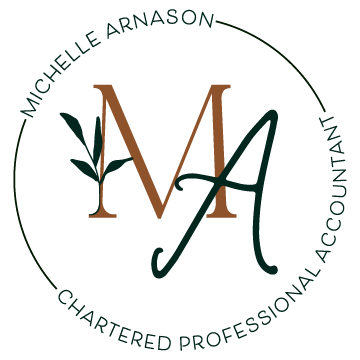Salary vs. Dividends
Should you be paying yourself a salary or dividends? The answer is... IT DEPENDS. Each business owner has different priorities, and both have advantages and disadvantages. Below are the advantages and disadvantages of both.
SALARY
Advantages
Recognized Income – may be easier to apply for mortgages or loans and to have a consistent base of income.
RRSP Contribution Room – this is considered “earned income” therefore, for personal tax purposes this would increase the RRSP contribution limit annually.
Personal Tax Implications – taxes are deducted off every paycheck, therefore, you should not have any surprises come April for personal taxes. This is a good way to assist with cash flow planning to ensure you do not have a large tax bill to pay in April.
Canada Pension Plan – you would be eligible to claim CPP upon retirement as you would be contributing each year.
Corporate Taxable Income – you will be able to deduct the salary expense and employer portion of CPP, and as a result, this will reduce the corporate tax burden. If the Company’s taxable income is more than $500,000 this may be a potential tax-saving tactic to reduce the exposure to higher corporate income taxes.
Disadvantages
Payroll Processing – there is a higher volume of work required to ensure you are correctly paying a salary. You are required to set up a payroll account, calculate and pay monthly payroll remittances and ensure deadlines are not missed as the penalties on this account are quite large. In addition, you must file a T4 return due in February of each year.
Canada Pension Plan – you are required to pay both the employee and employer portions of the pension plan. For 2023 the total CPP contributions for employees would be $3,754.45 which is matched by the employer.hat is showing on the statements? Was a reconciliation done for these accounts after the data entry was done, if it is not matching try to do a bank/credit card reconciliation of this account using the software.
DIVIDENDS
Advantages
Simplicity – you are not required to file monthly remittances to CRA, you only must file a T5 Return each February. Due to the reduced monthly filings, the likelihood of penalties is decreased.
Lower Cost – you will not be required to pay CPP for both employer and employee portion; this may potentially free up company cash flows in the short term.
Disadvantages
Payment of Profits – dividends are not a tax deduction for the business, rather, they are paid from the profits made in the business.
Personal Tax Implications – you may be prevented from claiming some personal tax deductions such as childcare expenses, and it does not contribute to your RRSP contribution room.
Canada Pension Plan – you will not be eligible for CPP benefits upon retirement since you are not paying these contributions.
Class of Shares - dividends are issued based on the class of shares in the corporation; this may cause issues when multiple parties are involved with the same class of shares.
One KEY reminder, if you are paying dividends or salary to a related party, it is important to first discuss any implications with an accountant or tax professional. Effective January 1, 2018, CRA provided strict tax rules designed to limit the benefits of income splitting through corporations.

